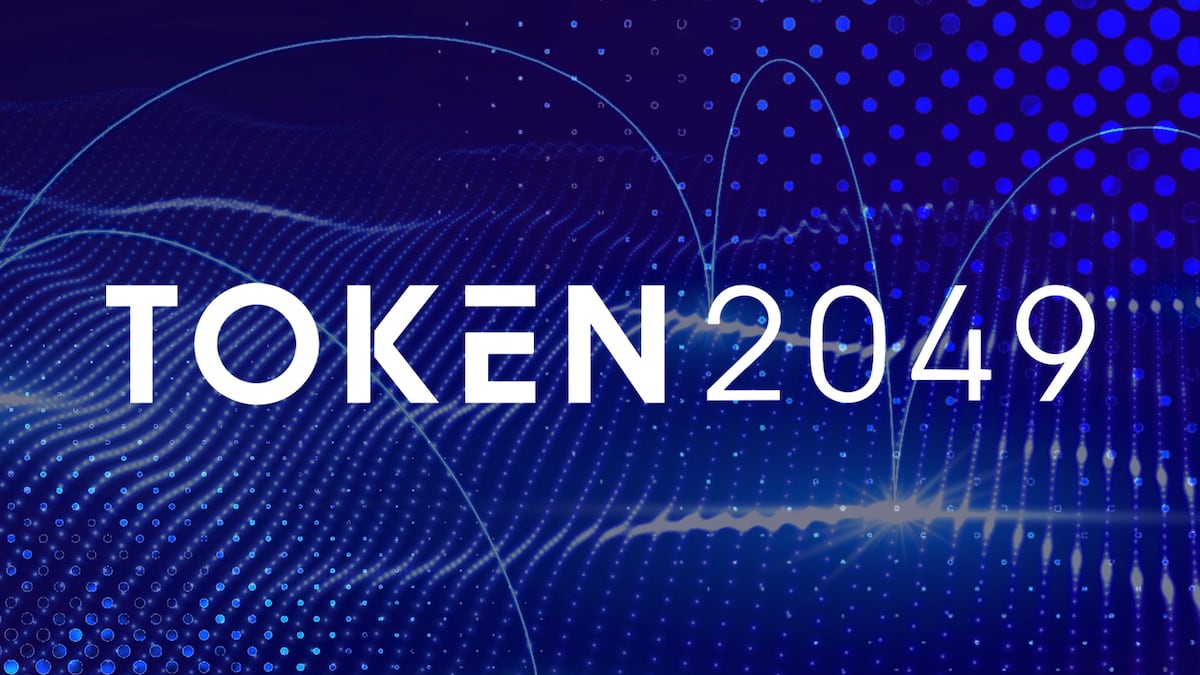This year’s TOKEN2049 in Singapore was a convergence point for the Web3 industry, bringing together builders, investors, and visionaries to define the next phase of adoption. The DL Research team attended Token2049 together with some of the leading voices in the industry, including Paolo Ardoino of Tether, Hunter Horsley of Bitwise Asset Management, Vlad Tenev of Robinhood, and Arthur Hayes of Maelstrom.
During the event, we also had the chance to sit down with people who shape the Web3 industry, including Sergej Kunz of 1inch, Dr. Clark Alexander of Argentum AI, Fawzi Hamze of Asset Advisor Capital, Moshe Cohen of PriveX, Erik Gjergji of BTCC, Wishlonger of Pharos, and Mete Al of ICB Labs, among others.
Through a series of on-the-ground interviews, several key trends emerged, signalling a clear shift in the industry’s focus.
DeFi Matures into B2B Infrastructure
One of the key themes was how DeFi protocols evolved from user-focused apps to vital B2B infrastructure for the broader digital economy. This transition toward sustainability and institutional adoption was clearly demonstrated by 1inch’s major rebrand. Their new, streamlined identity marks a deliberate pivot away from their playful origins to appeal to enterprise clients.
This focus on building robust, institutional-grade systems was a recurring theme. The team at Pharos is working on what they describe as an “on-chain fintech city,” a high-performance Layer-1 blockchain designed from the ground up to provide the reliability and speed required for institutional DeFi and the tokenisation of Real-World Assets (RWAs).
To dive deeper into 1inch’s pivot to B2B infrastructure, read our full conversation with Sergej Kunz here. To learn more about Pharos’s vision for an on-chain financial centre, read our interview with Wishlonger here.
The Collision of AI and Decentralisation
AI was a dominant topic at the conference, but the most insightful conversations moved beyond the hype to address both its immense opportunities and its very real physical constraints. Dr. Clark Alexander of Argentum AI argued that Large Language Models (LLMs) are often “overkill” and that the industry is rapidly approaching a physical energy barrier, where the cubic growth in electricity required for training will become unsustainable.
While some are focused on solving these physical constraints through decentralised compute marketplaces, others are already building the next generation of AI-native trading. PriveX is developing a platform that not only allows users to deploy AI trading agents with ease but also provides a “privacy mode,” a critical feature for traders looking to protect their strategies in an increasingly automated and transparent market.
For a detailed look at the physical limits of AI, read our interview with Dr. Clark Alexander here. To understand the future of private, AI-driven trading, read our full discussion with Moshe Cohen here.
Stablecoins Go U.S.-Native
Another loud drumbeat at TOKEN2049: stablecoins are graduating from experiment to national market infrastructure. Tether CEO Paolo Ardoino unveiled USAT, a U.S.-focused stablecoin that will interoperate 1:1 with USDT and be issued by Anchorage Digital, the federally chartered crypto custodian. With former White House advisor Bo Hines at the helm, the target is unapologetically ambitious, aiming for $1 trillion in three to five years, leveraging the same distribution flywheel that propelled USDT to roughly $174 billion in circulation.
Beyond product, the pitch is about rails: USAT aims to give institutions a compliant digital‑dollar instrument while letting international USDT users tap U.S. financial plumbing more seamlessly.
Underpinning that ambition is a fast‑shifting U.S. policy regime. Bitwise CEO Hunter Horsley argued that the Genius Act and a friendlier SEC under Chair Paul Atkins have created durable footing, with momentum that’s increasingly bipartisan and hard to unwind. He noted how exposure has crept into pensions, retirement accounts, endowments, and banks, and how political capital (think Fairshake’s nine‑figure war chest) now flows to pro‑innovation candidates. The net: stablecoins look less like a wedge issue and more like core market plumbing.
For more on USAT’s launch and the policy backdrop, read our articles from the TOKEN2049 floor about Paolo Ardoino here and Hunter Horsley here.
Tokenisation’s Freight Train and a Two‑Speed Market
If stablecoins are the cash leg, tokenisation is the asset leg, and it’s accelerating. Robinhood co‑founder Vlad Tenev called tokenisation “a freight train,” outlining how Robinhood has already listed 200+ tokenised stocks on Arbitrum for European users, alongside tokenised equity in private names like OpenAI. He expects most major markets to have frameworks within five years, with full penetration taking a decade or more; the EU’s MiCA gives Europe a head start while the U.S. advances the House Clarity Act and a Senate companion. The opportunity gap is massive: roughly $32B in tokenised assets today versus $115T in public equities alone.
Institutions are moving: BlackRock and Franklin Templeton have deployed nearly $5B into tokenised funds, Galaxy Digital has begun issuing company stock on Solana and Ethereum, and the SEC’s “Project Crypto” signals intent to bring more market plumbing on‑chain. Yet, as Arthur Hayes reminded attendees, the “hottest” on‑chain opportunities, DeFi and active yield strategies, remain operationally challenging for large managers bound by security and workflow constraints. That creates a two‑speed market: institutions scale tokenised, compliant products; agile traders harvest native on‑chain yield. If central banks keep adding liquidity, Hayes argues, both tracks could rise, with tokenised rails channelling inflows while DeFi keeps rewarding users who can move fast and self‑custody safely.
For the timeline and tactics behind tokenisation, and why retail still finds alpha first, read our full articles digesting the talk of Vlad Tenev here and the insights from Arthur Hayes here.
Bridging Web3 with the Real World
Ultimately, mass adoption requires building bridges to the real world. For some, this means connecting with mainstream culture. The exchange BTCC has seen explosive growth, expanding from two million to over 10 million users in just a few years, partly by leveraging high-profile sports sponsorships with figures like NBA All-Star Jaren Jackson Jr. to reach new audiences.
While some projects reach the mainstream through culture, others are bringing real-world assets directly on-chain. MIRAI-X is pioneering a new model for RWA tokenisation by shifting investors to “co-partners,” allowing them to collectively acquire prime real estate, such as hotels and palaces. This focus on specific, real-world use cases also extends to solving societal challenges, as seen with ICB Labs. The project is building a secure and compliant metaverse focused entirely on education for children, in partnership with universities and NGOs.
To learn about BTCC’s global growth strategy, read our interview with Erik Gjergji here. For more on MIRAI-X’s innovative approach to tokenizing real estate, read our conversation with Fauzi Hamze here. And to explore the future of education in the metaverse, see our full discussion with Mete Al here.


